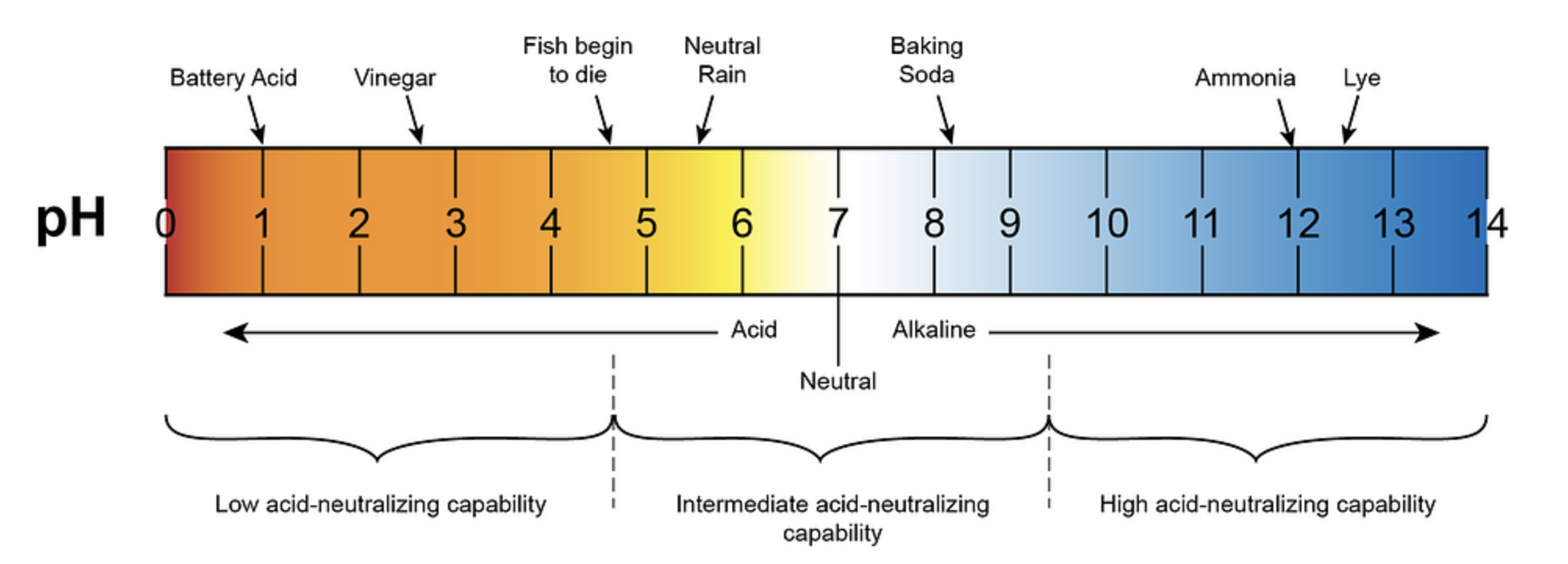The pH value of water flowing through limestone typically ranges from 6.9 to 7.5. This is due to the reaction between the acidic water and the calcium carbonate (CaCO3) present in the limestone, which neutralizes the acid and raises the pH level. Understanding the factors that affect the pH of water flowing through limestone is crucial for maintaining water quality and ensuring the health of aquatic ecosystems.
Understanding the Limestone-Water Interaction
When water flows through limestone, it dissolves some of the calcium carbonate, forming calcium ions (Ca2+) and bicarbonate ions (HCO3-). This process increases the alkalinity of the water, which helps to buffer against changes in pH and maintain a relatively stable pH level.
The specific reactions that occur can be summarized as follows:
-
Calcium carbonate (CaCO3) dissolves in water:
CaCO3 + H2O ⇌ Ca2+ + HCO3- -
The bicarbonate ions (HCO3-) can further dissociate, forming carbonate ions (CO32-) and hydrogen ions (H+):
HCO3- ⇌ CO32- + H+
The presence of these ions in the water helps to maintain a stable pH level, as the carbonate and bicarbonate ions act as a buffer system, neutralizing any changes in acidity or basicity.
Factors Affecting the pH of Water Flowing Through Limestone
While the interaction between water and limestone typically results in a pH range of 6.9 to 7.5, there are several factors that can influence the pH of the water:
- Carbon Dioxide (CO2) Levels: If the water contains high levels of carbon dioxide (CO2), this can lower the pH level by forming carbonic acid (H2CO3).
- Acidic Pollutants: The presence of acidic pollutants, such as sulfuric acid (H2SO4) or nitric acid (HNO3), can also lower the pH level of the water.
- Temperature: Changes in water temperature can affect the solubility of calcium carbonate and the rate of the chemical reactions, which can influence the pH level.
- Residence Time: The longer the water remains in contact with the limestone, the more time it has to dissolve the calcium carbonate and increase the pH.
Monitoring and Controlling the pH of Water Flowing Through Limestone
To maintain a healthy pH level in water flowing through limestone, it is important to monitor and control the levels of various chemicals and substances that can affect the pH. This may involve the following steps:
- Water Quality Monitoring: Regularly testing the water for parameters such as pH, alkalinity, and the presence of any acidic pollutants or other substances that could affect the pH.
- Water Treatment: Implementing water treatment techniques, such as filtration or chemical neutralization, to remove or neutralize any acidic pollutants or other substances that could lower the pH level.
- pH Adjustment: If necessary, adjusting the pH level by adding or removing limestone or other pH-adjusting agents to maintain the desired pH range.
- Ecosystem Maintenance: Ensuring that the overall water quality, including parameters such as temperature, dissolved oxygen, and total suspended solids (TSS), is within acceptable ranges to support a healthy aquatic ecosystem.
Conclusion
The pH of water flowing through limestone is an important factor to consider in managing water quality and ensuring the health of aquatic ecosystems. By understanding the factors that affect pH and taking steps to monitor and control this parameter, it is possible to maintain a healthy and stable pH level in water flowing through limestone systems.
References:
- Suwannee River Water Management District. (n.d.). pH | Suwannee River Water Management District. Retrieved April 27, 2024, from https://www.mysuwanneeriver.com/423/pH
- ResearchGate. (2018). The pH values (15) before and after the limestone filter measured… Retrieved April 27, 2024, from https://www.researchgate.net/figure/The-pH-values-15-before-and-after-the-limestone-filter-measured-during-the-monitoring_fig1_273208658
- Cichlid Fish Forum. (2013). Raising pH with limestone | Cichlid Fish Forum. Retrieved April 27, 2024, from https://www.cichlid-forum.com/threads/raising-ph-with-limestone.283025/
- Ph Adjustment. (n.d.). Limestone for pH Adjustment in Industrial Wastewater Neutralzation … Retrieved April 27, 2024, from https://www.phadjustment.com/TArticles/Limestone.html
- Fondriest Environmental, Inc. (2013). pH of Water – Environmental Measurement Systems. Retrieved April 27, 2024, from https://www.fondriest.com/environmental-measurements/parameters/water-quality/ph/.

